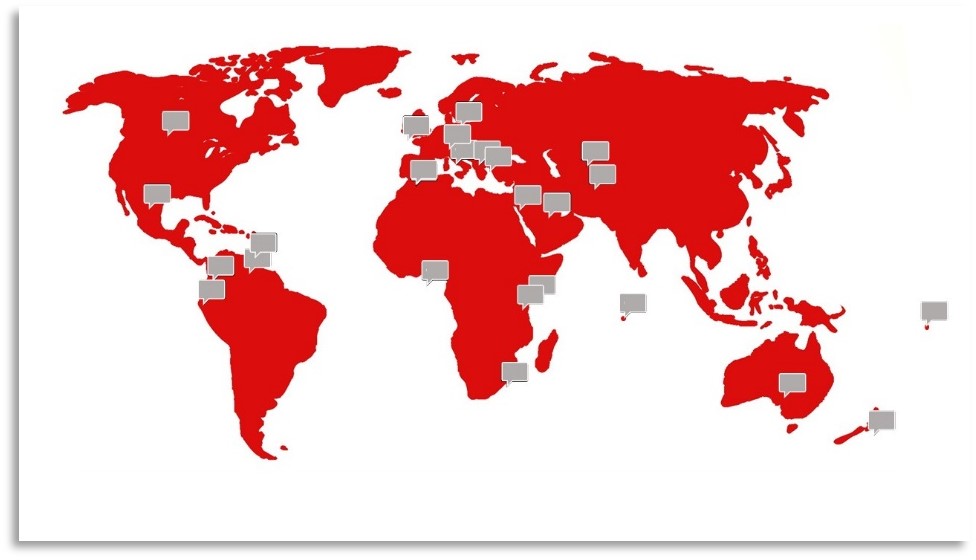Progress update on the Women and Leadership Resolution
by the Global Network of Women Leaders in the International Red Cross and Red Crescent Movement (GLOW Red)

Recognizing the importance of the participation of women leaders from a diverse range of backgrounds in decision-making at all levels, Movement partners and states unanimously agreed to adopt Resolution 5 – Women and Leadership in the humanitarian action of the International Red Cross and Red Crescent Movement at the 33rd International Conference in 2019.
The resolution urges Movement components to increase the representation of women.
from different backgrounds in decision-making at all levels, and to identify and invest in women leaders through mentorship and leadership development programmes. The resolution also calls on Movement components to achieve gender parity by 2030 and to collect sex-disaggregated data to monitor progress.
The resolution also encourages Movement components to invest in research and to build an evidence base on women’s leadership.
Following the adoption of the resolution, GLOW Red established the Women and Leadership Resolution Working Group at the start of 2021. Further information about this Working Group is available here. The group works to promote the resolution by raising awareness and encouraging Movement components and states to take action and fulfil their commitments on gender parity.
The working group’s first milestone was the publication, in March 2022, of a progress report on the Women and Leadership Resolution. The report aimed to inspire Movement components to break down silos, exchange best practices to advance women’s leadership, and to share and celebrate the progress made towards the implementation of the resolution. The survey the report was based on had been shared widely within the Movement; the working group had received a total of 39 replies from 26 different members of the Movement, namely 13.4 per cent of all Movement members.
The report outlined achievements and challenges in promoting women’s leadership. Innovative examples of good practices included the implementation of leadership development programmes, measures to review and update statutes and policies, the introduction of targeted recruitment policies, the appointment of women to executive teams and the creation of mentorship opportunities.
The report highlights case studies from across the Movement, with in-depth information on the excellent work carried out by its components. Examples include progress made by the Spanish Red Cross by promoting the concept of “male allies”, efforts by the Maldives Red Crescent and the French Red Cross to improve the gender balance among board members through statutory reforms, and the implementation by the Australian Red Cross of leadership pipeline programmes for women.
The report also analyses barriers to implementation of the resolution, including: patriarchal attitudes within society and Movement components, the inadequate allocation of financial resources to implement the resolution, a lack of awareness of the resolution, assumptions that gender parity has already been achieved within the Movement, and the lack of an intersectional approach to the implementation of the resolution.
The resolution specifically calls for the representation of women from diverse backgrounds. In this instance, “diverse” refers to the importance of having women from a variety of different backgrounds in leadership positions, including – but not limited to – women of different ethnicities, ages, abilities, educational backgrounds, classes, castes, sexual orientations and/or migrant status.
Through the reporting mechanism, respondents indicated that the absence of an intersectional lens limited the advancement of women from diverse backgrounds into leadership positions, as it prevented an adequate analysis of all barriers. Women from across the Movement come from a variety of backgrounds and have specific individual needs and strengths. They are not a homogenous group, and should not be treated as one.
An intersectional analysis allows us to understand the unique needs of women attempting to access leadership positions. Respondents highlighted the need to revise recruitment standards and policies to focus on identifying the competencies and skills needed for specific jobs instead of adopting a one-size-fits-all approach that hampers advancement. There are inherent limitations in the way post descriptions and selection criteria are currently drafted, in terms of qualifications, working rights and permits, and even citizenship and mobility requirements. These create unnecessary obstacles for women in general, and young women in particular. Steps must be taken to ensure that all women are able to access leadership positions. The long-term success of the Movement depends on ensuring that all women’s voices are heard.
Has your organization taken steps to ensure that all women are able to access leadership positions? Are you interested in submitting information on the work carried out by your organization to advance women’s leadership? Submissions should be sent to the GLOW Red reporting mechanism no later than six months before the 34th International Conference; we plan to prepare an updated report, containing additional information, for presentation at the conference. To ensure that the activities of your National Society or your ICRC or IFRC office are featured in the report, please fill out the reporting mechanism survey on GLOW Red’s website: www.glowred.org/report-on-the-resolution.

For any questions, please contact GLOW Red at glowred@redcross.se.
GLOW Red strongly encourages Movement components to contribute to the official follow-up on the resolution by filling out the formal reporting form.
Read more about this topic
Women and Leadership Resolution
Progress Report on the Women and Leadership Resolution
From Talk to Action: Making Strides on the Women and Leadership Resolution
The International Committee of the Red Cross, the International Federation of Red Cross and Red Crescent Societies, and the Standing Commission of the Red Cross and Red Crescent, in its function as Trustee of the International Conference of the Red Cross and Red Crescent (the Conference), cannot be held responsible or liable in any manner for any user-generated content or posts on this Database. In the event that the Website team considers any post or content to be incompatible with the Fundamental Principles of the International Red Cross and Red Crescent Movement and/or with the objectives of the Conference, it reserves the right to remove such content.




